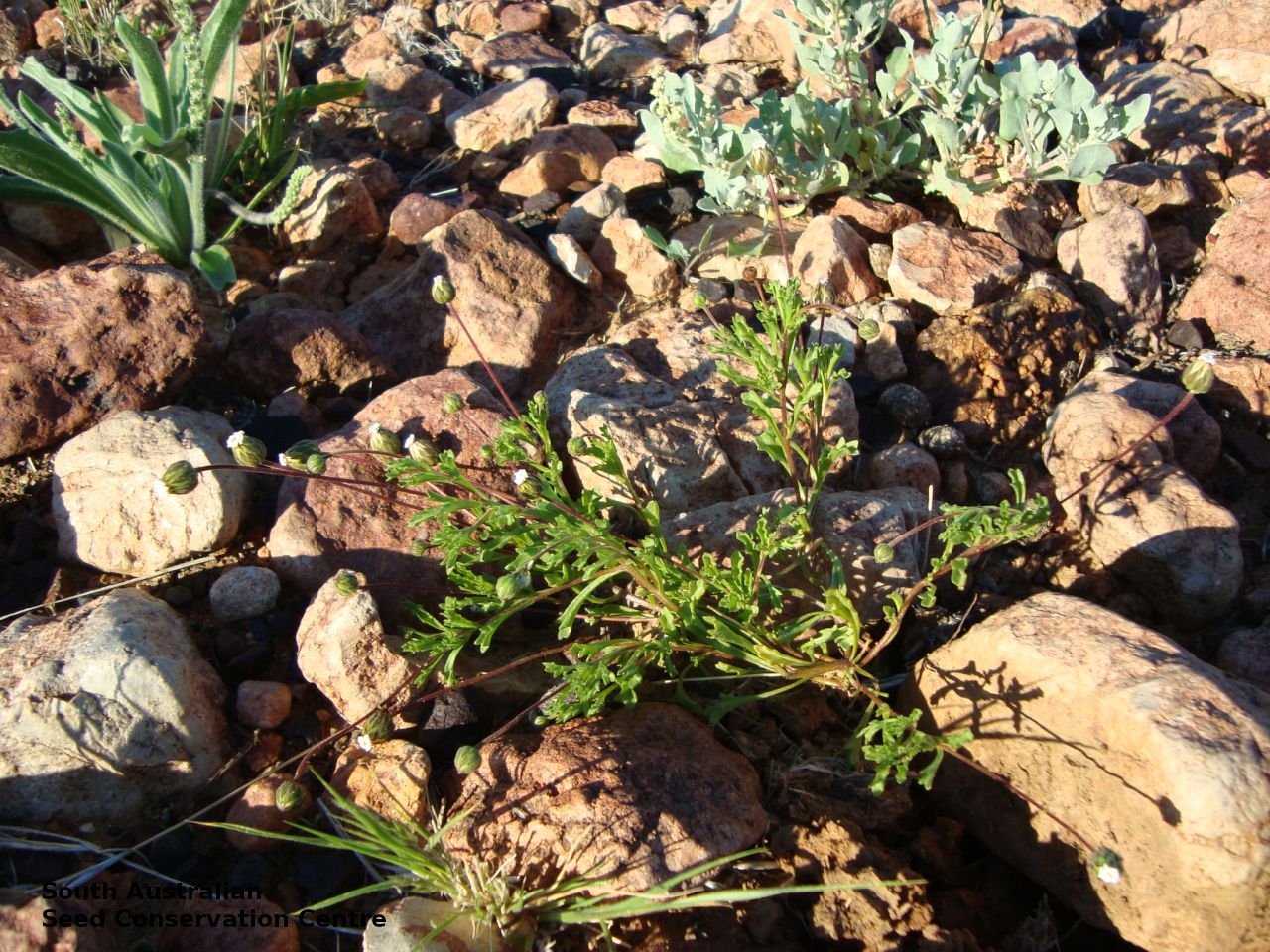
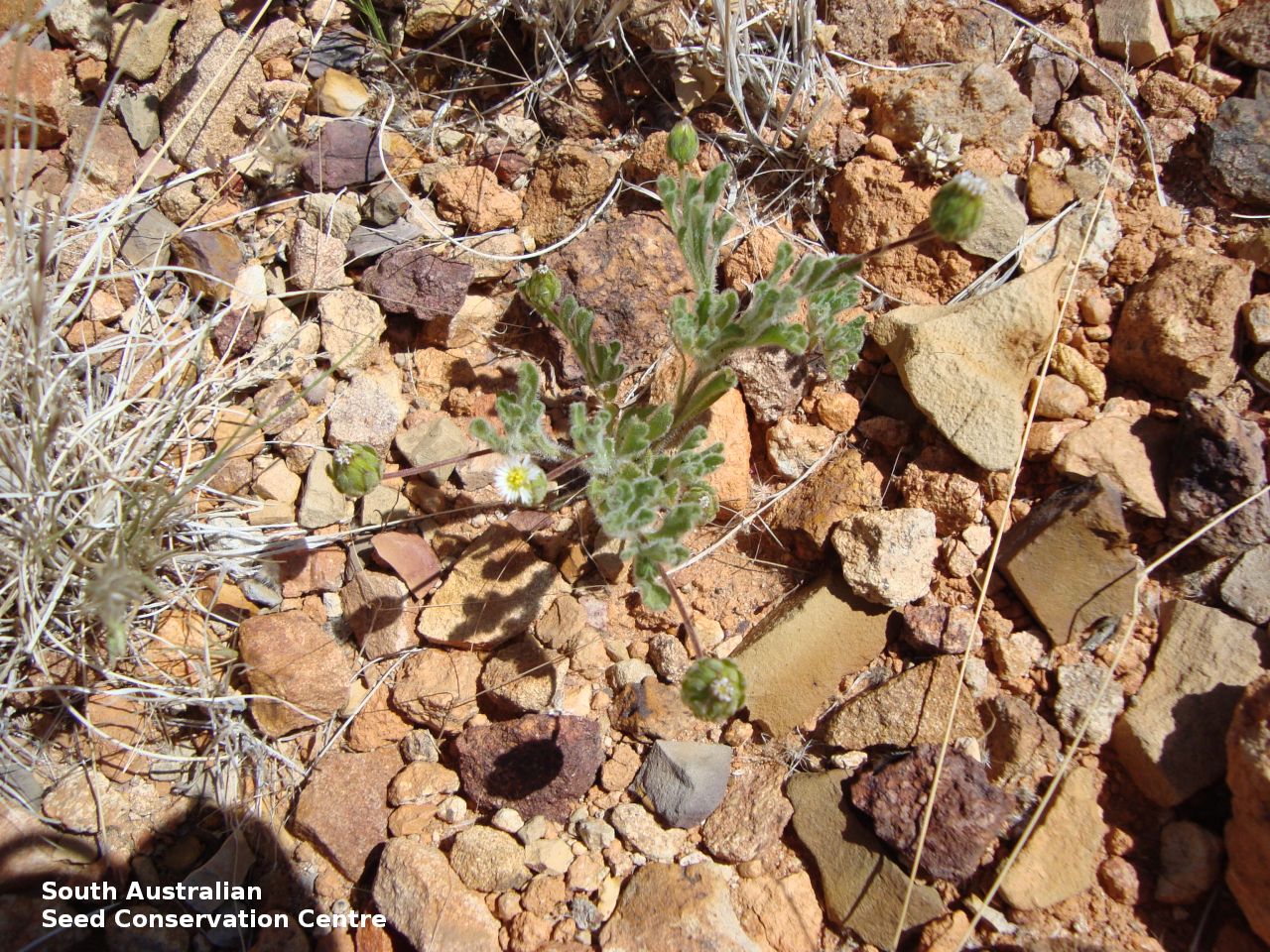
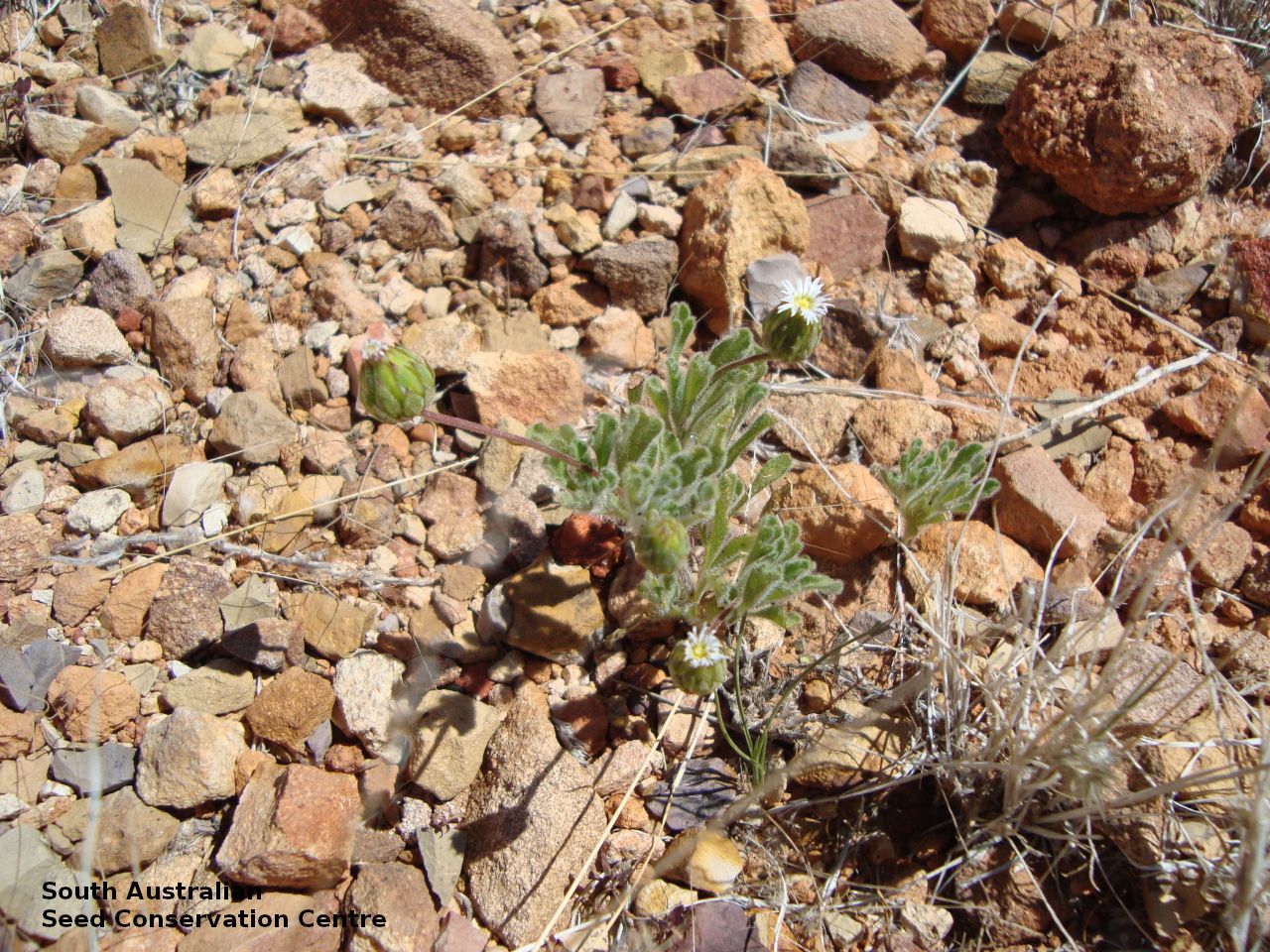
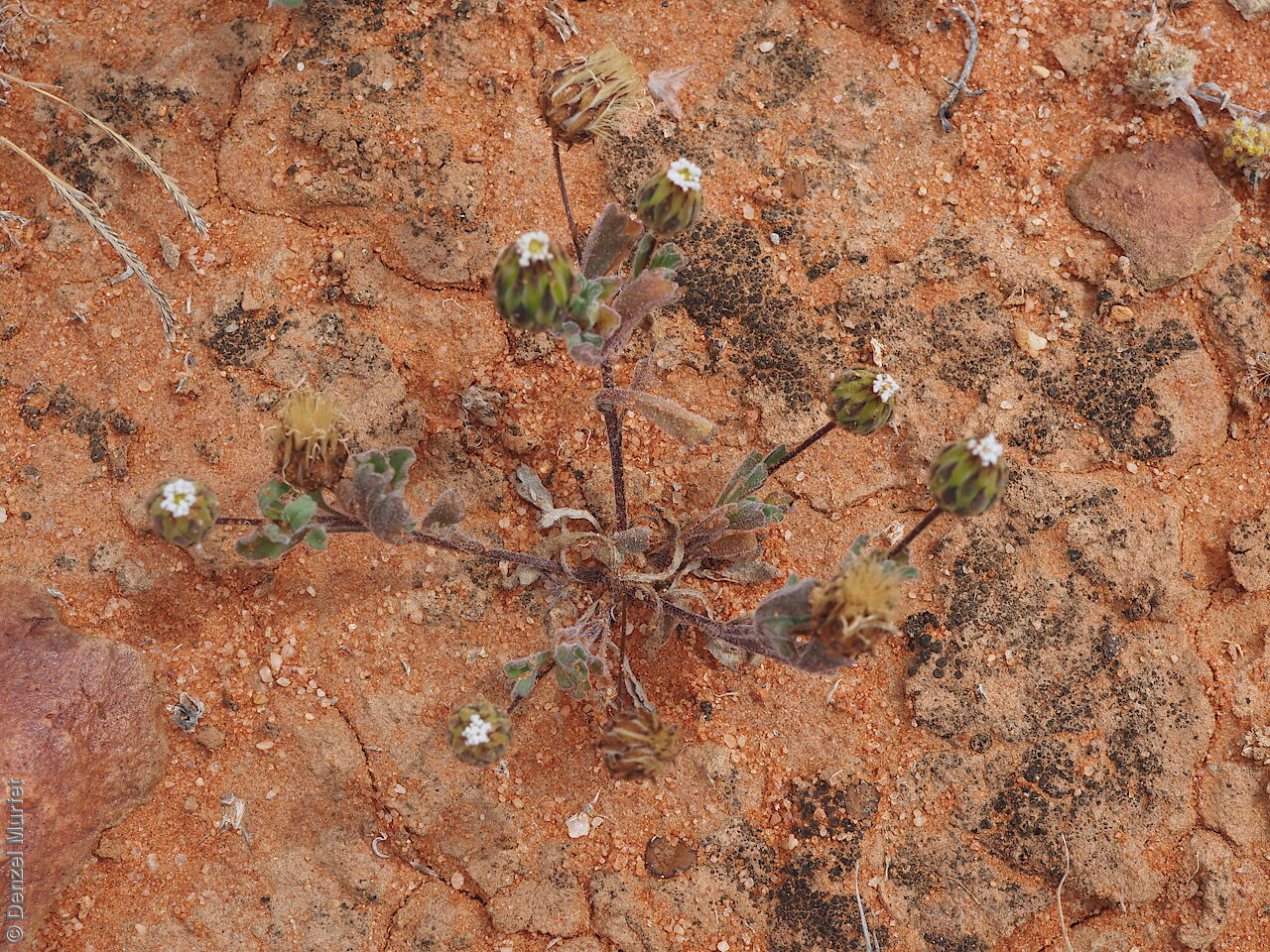
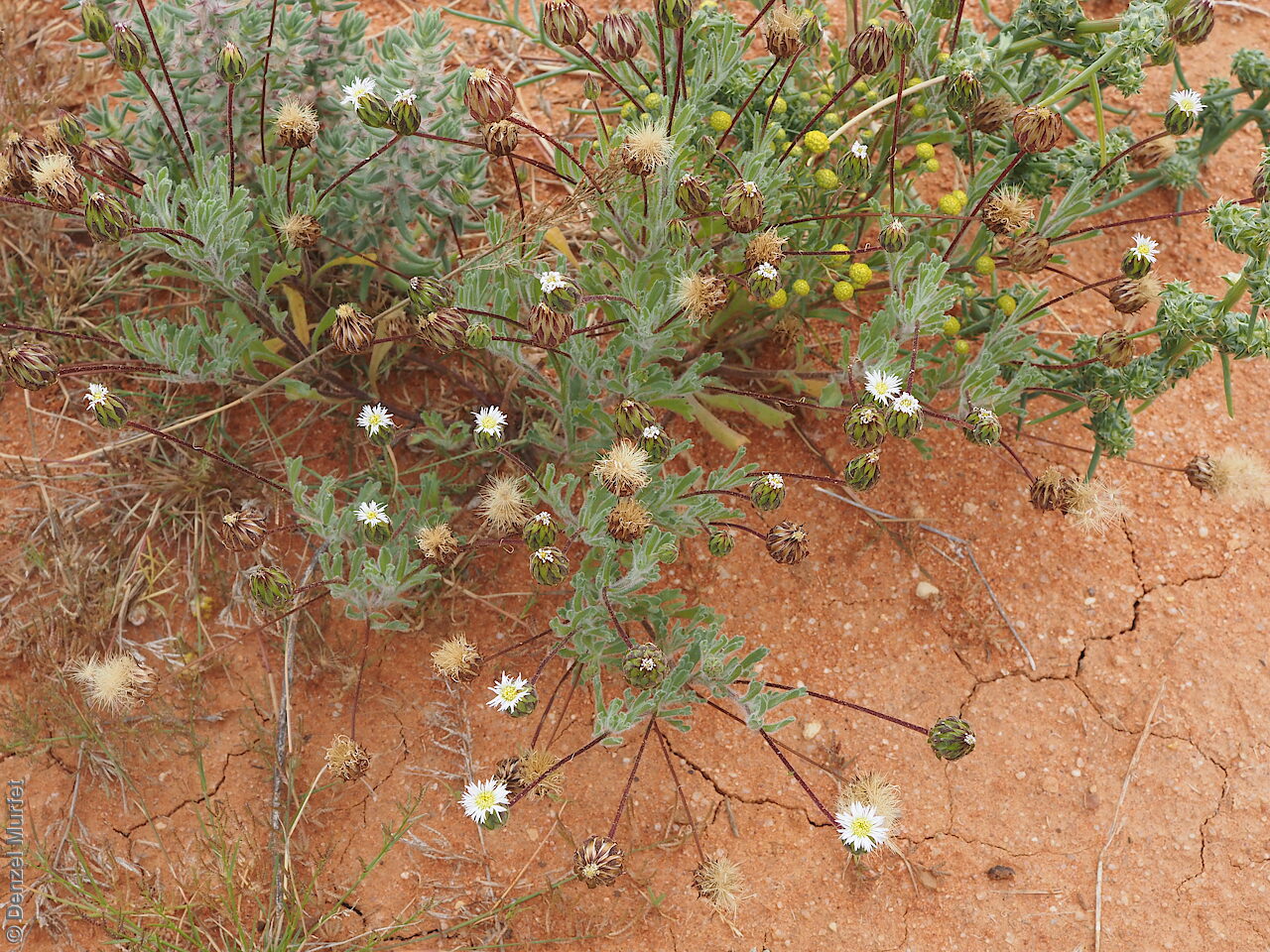
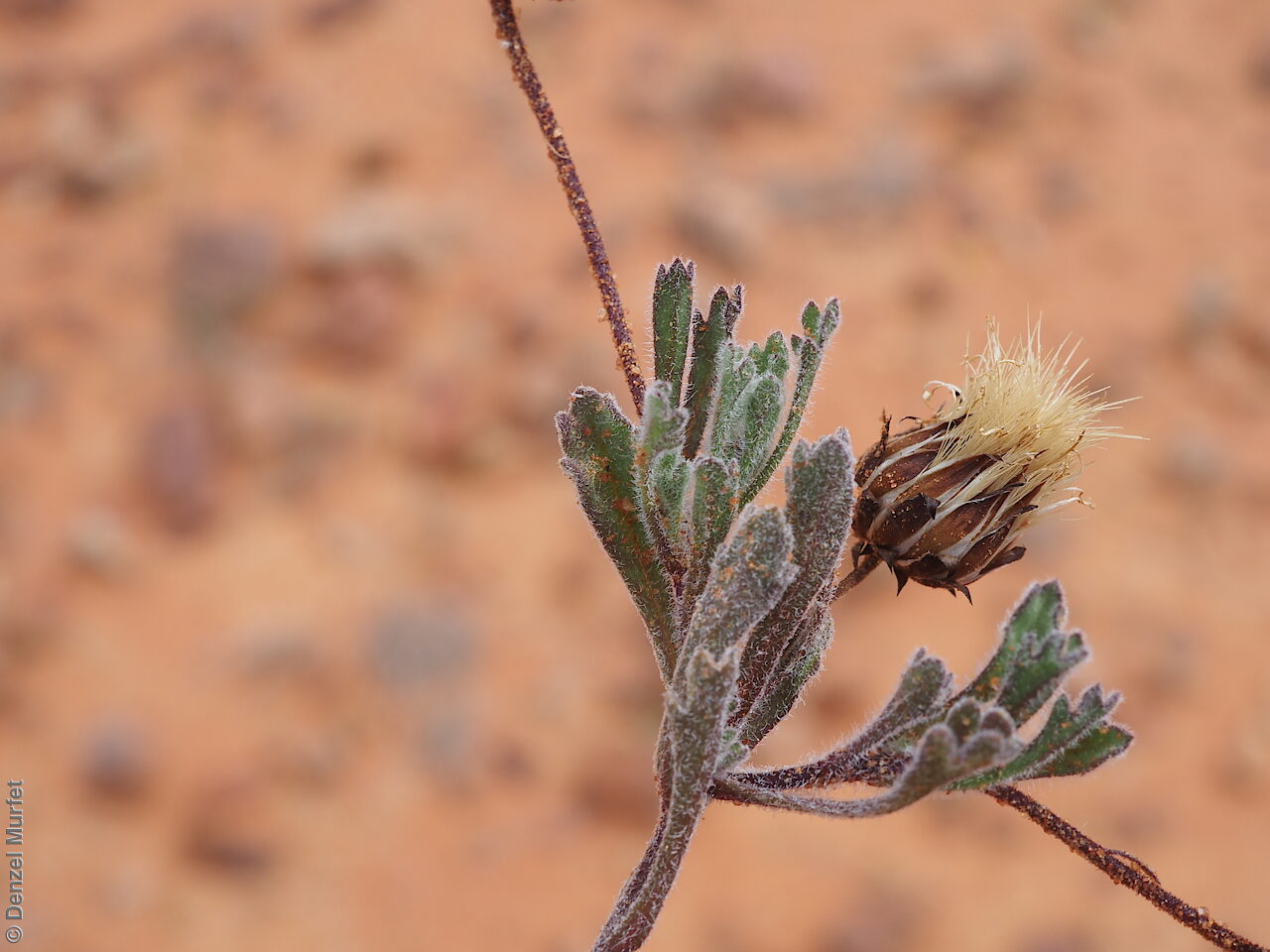
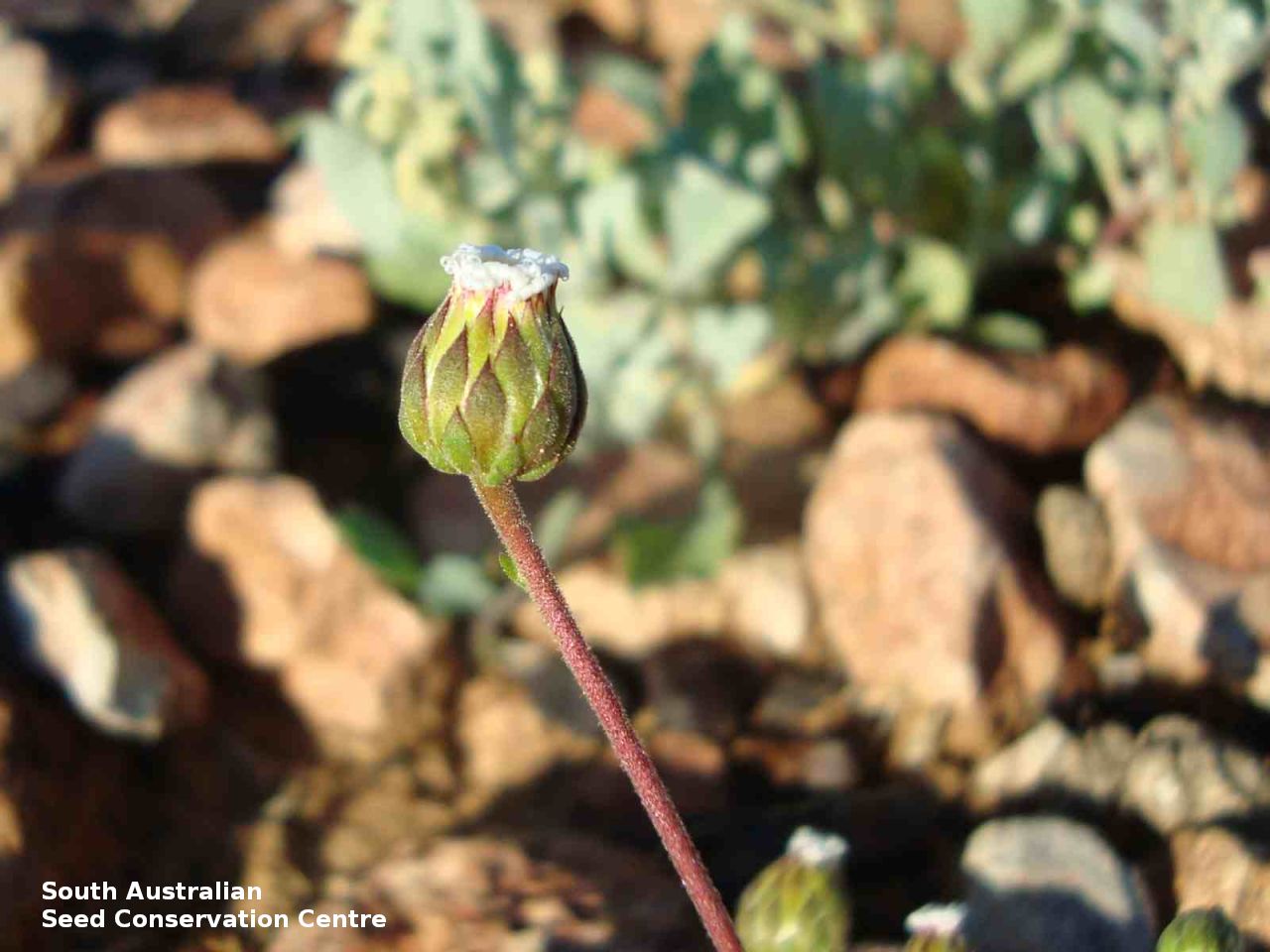
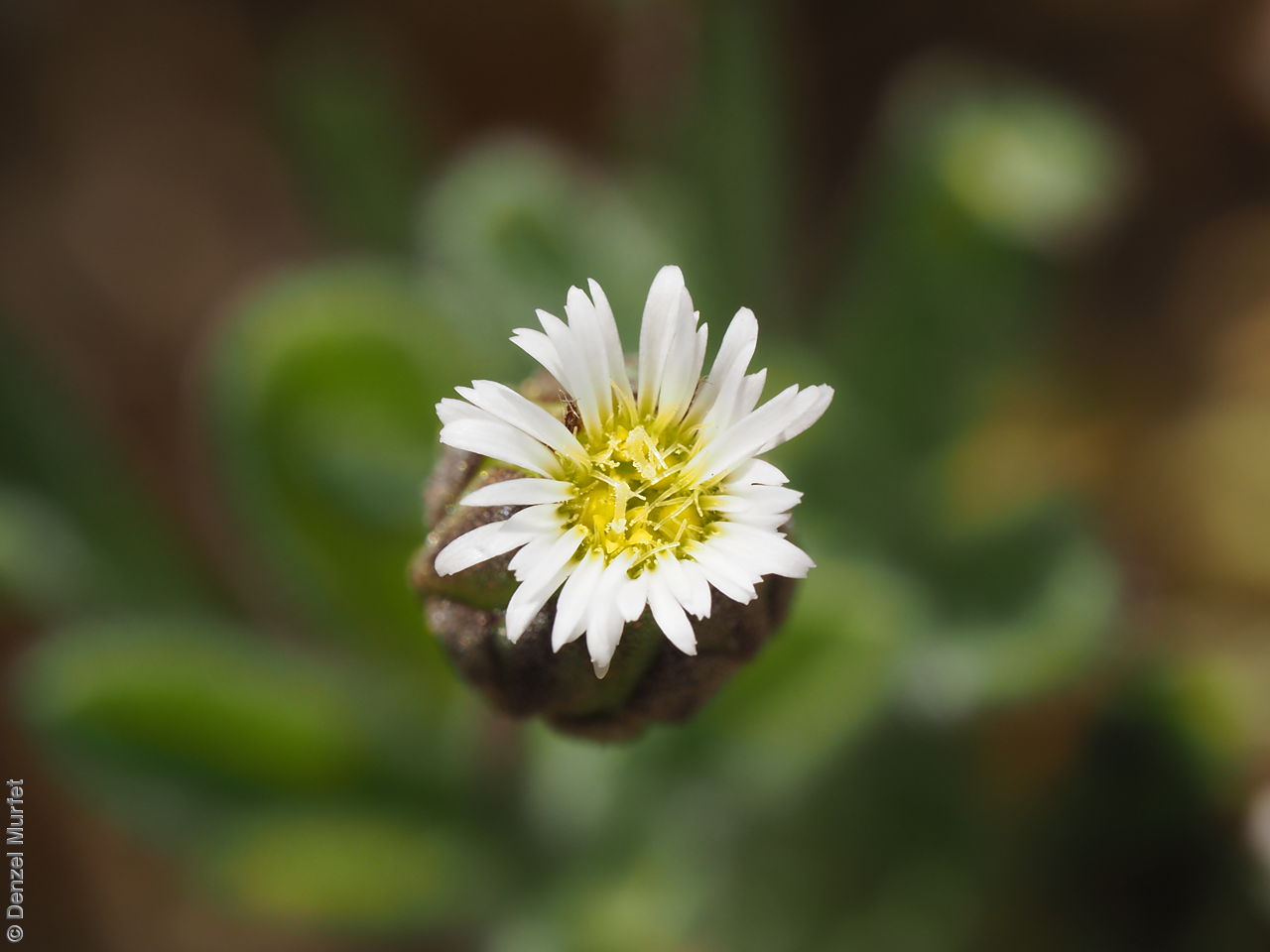
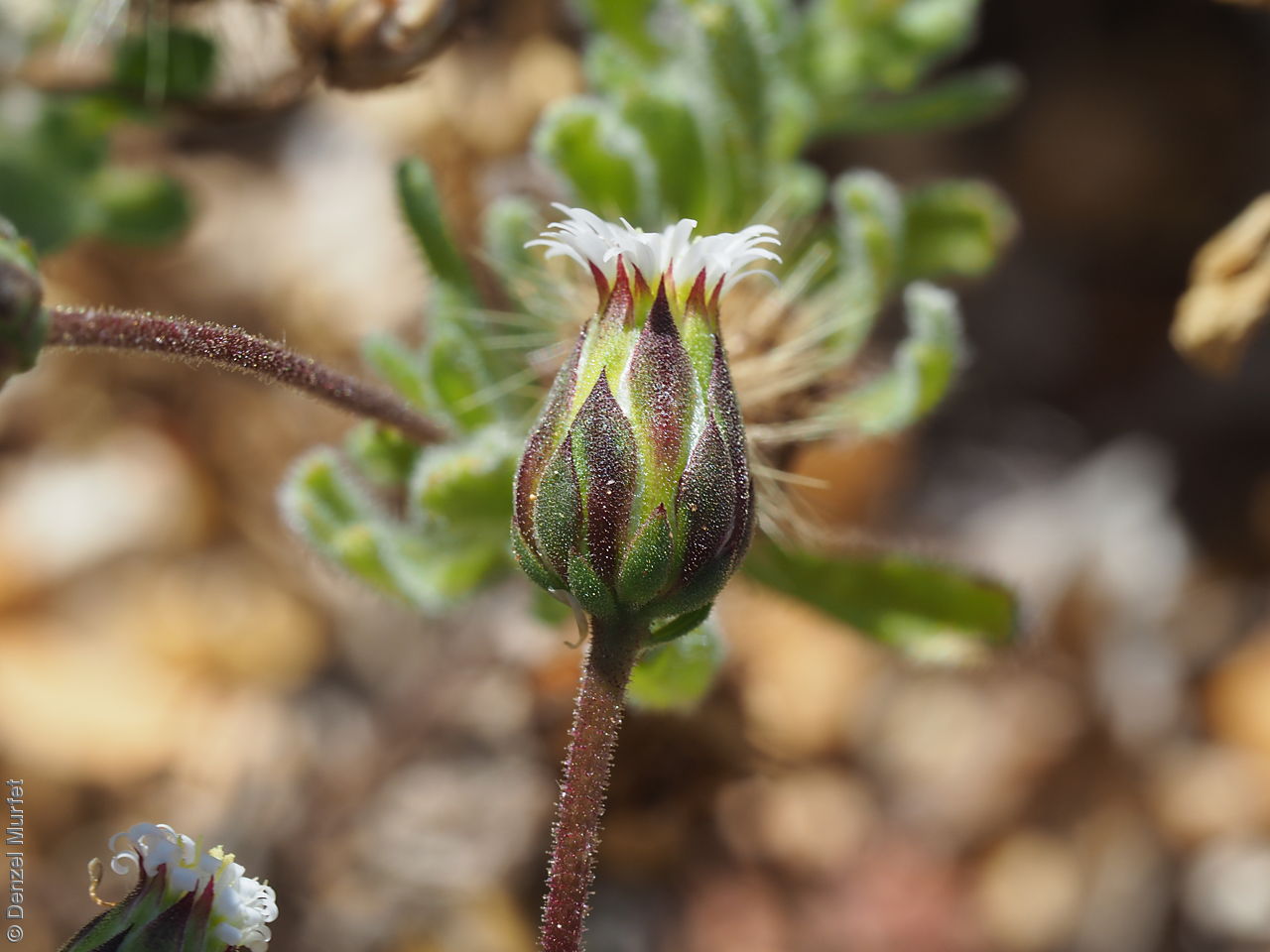
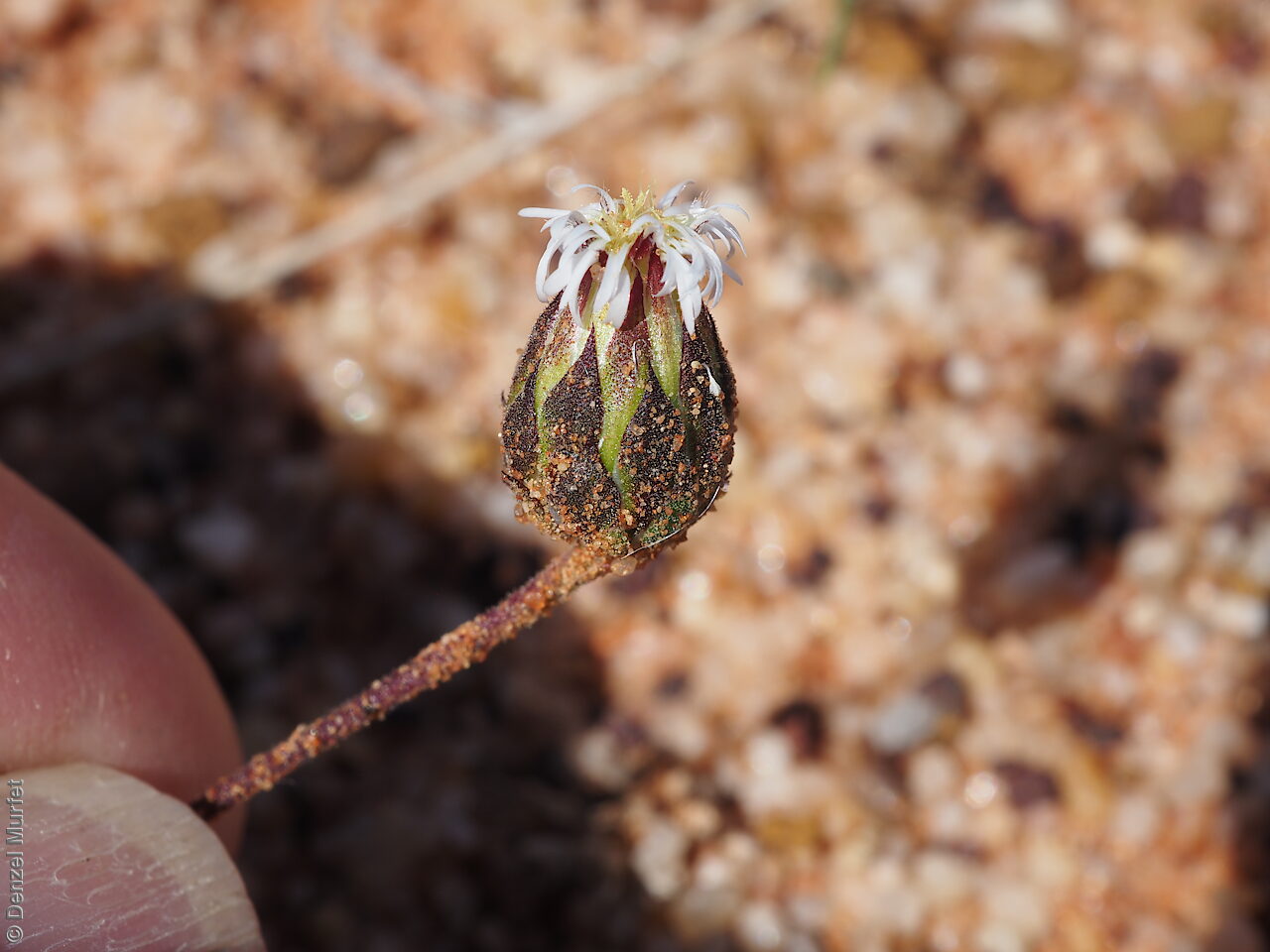
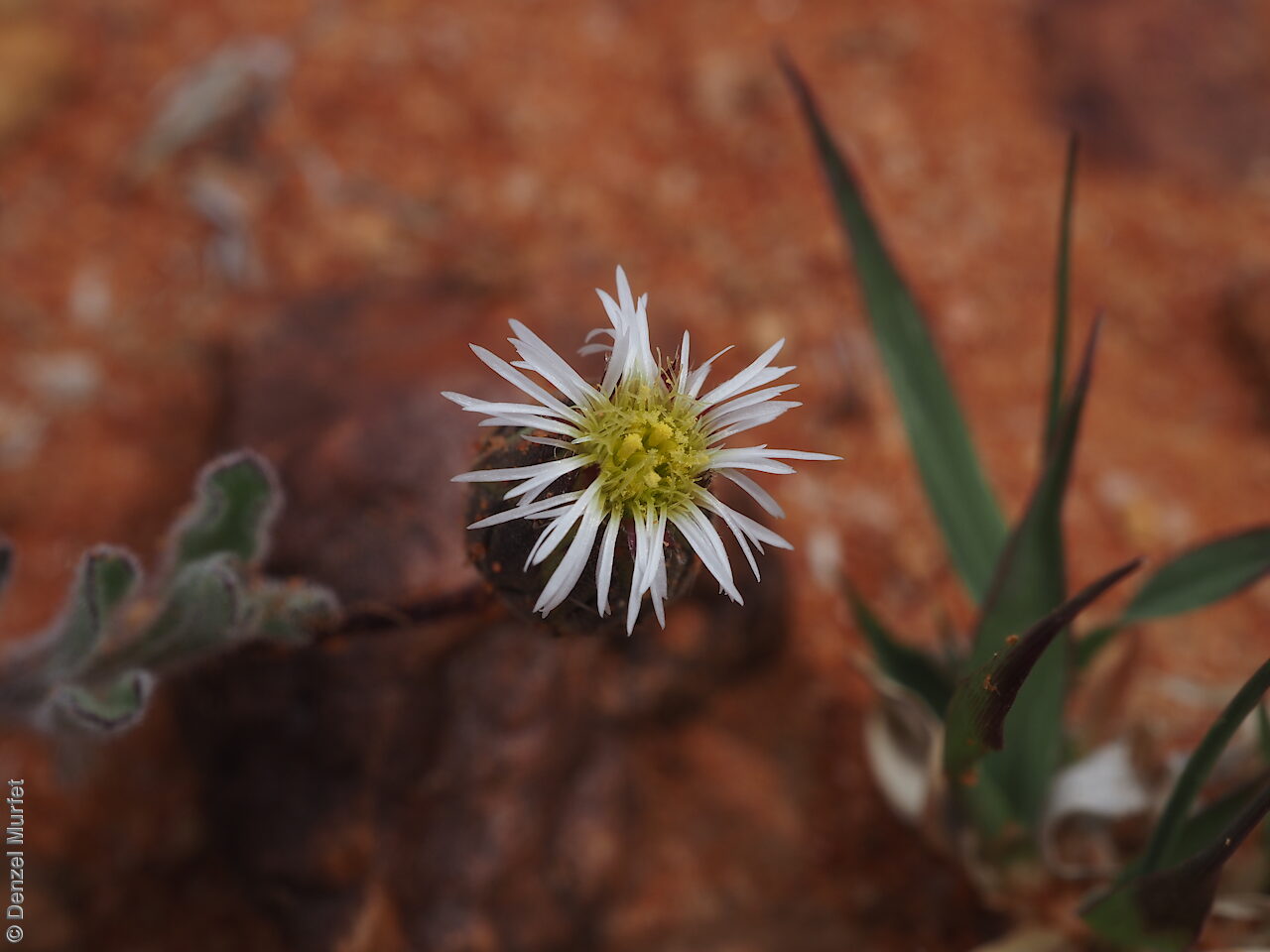
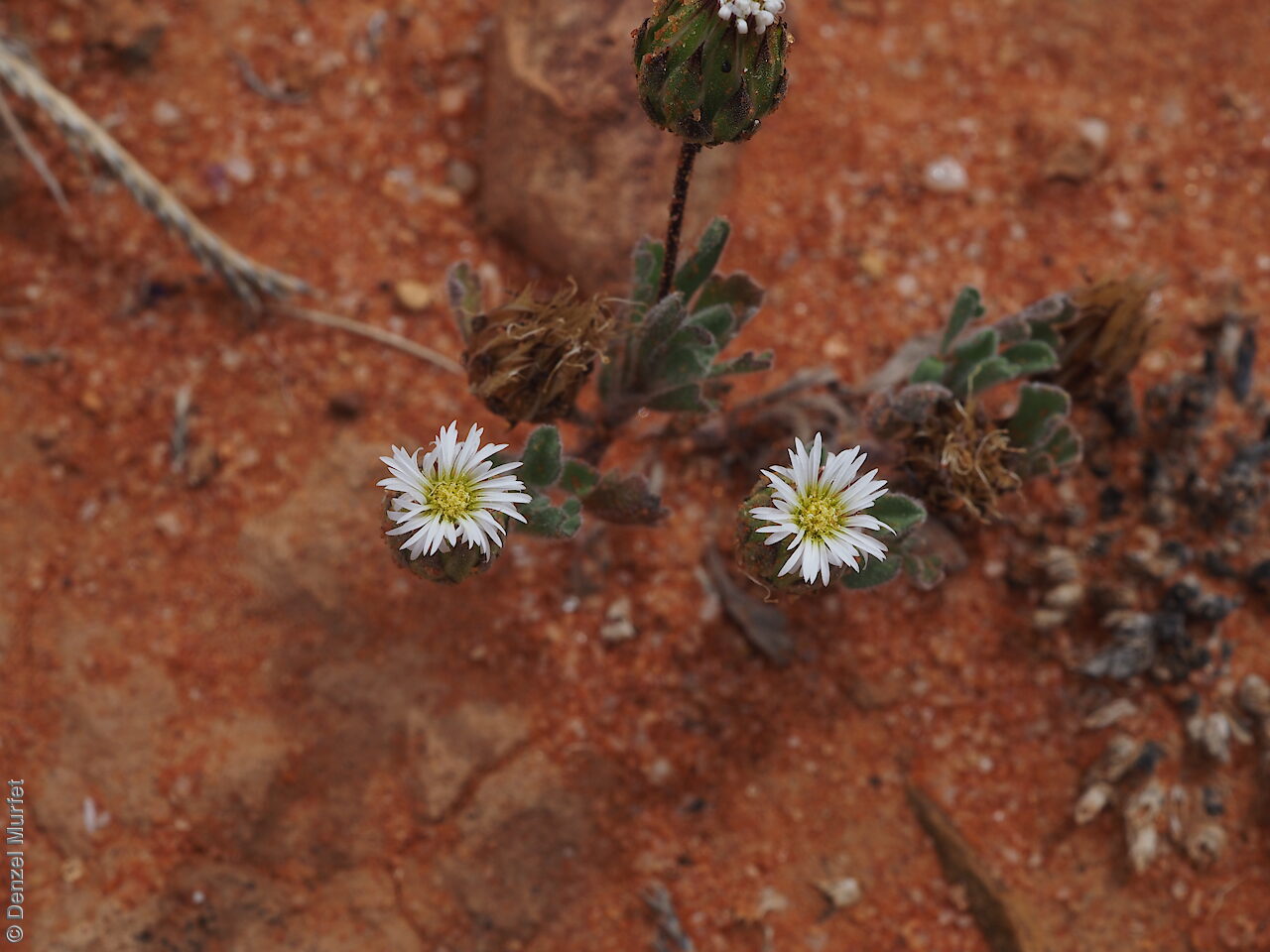
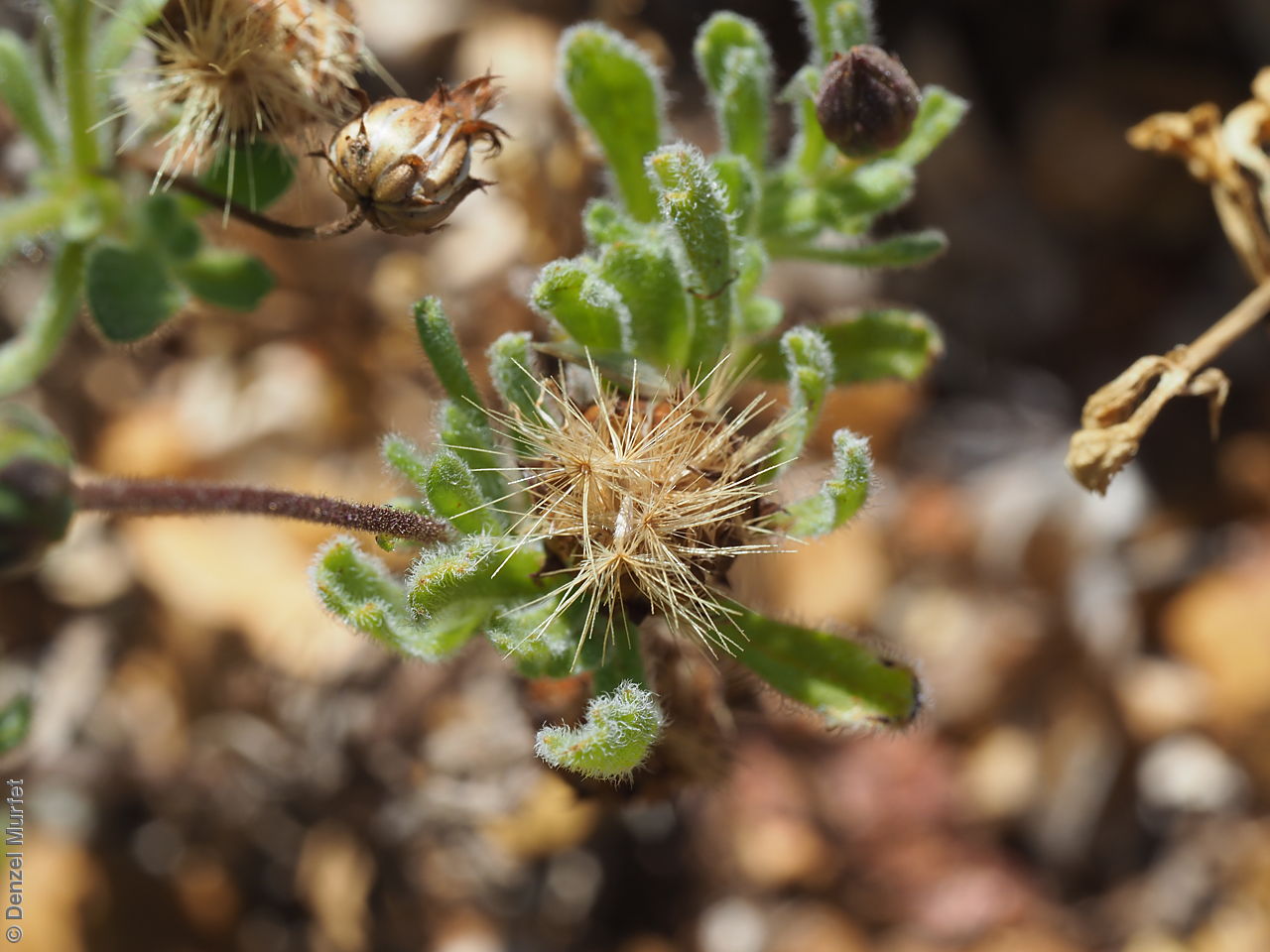
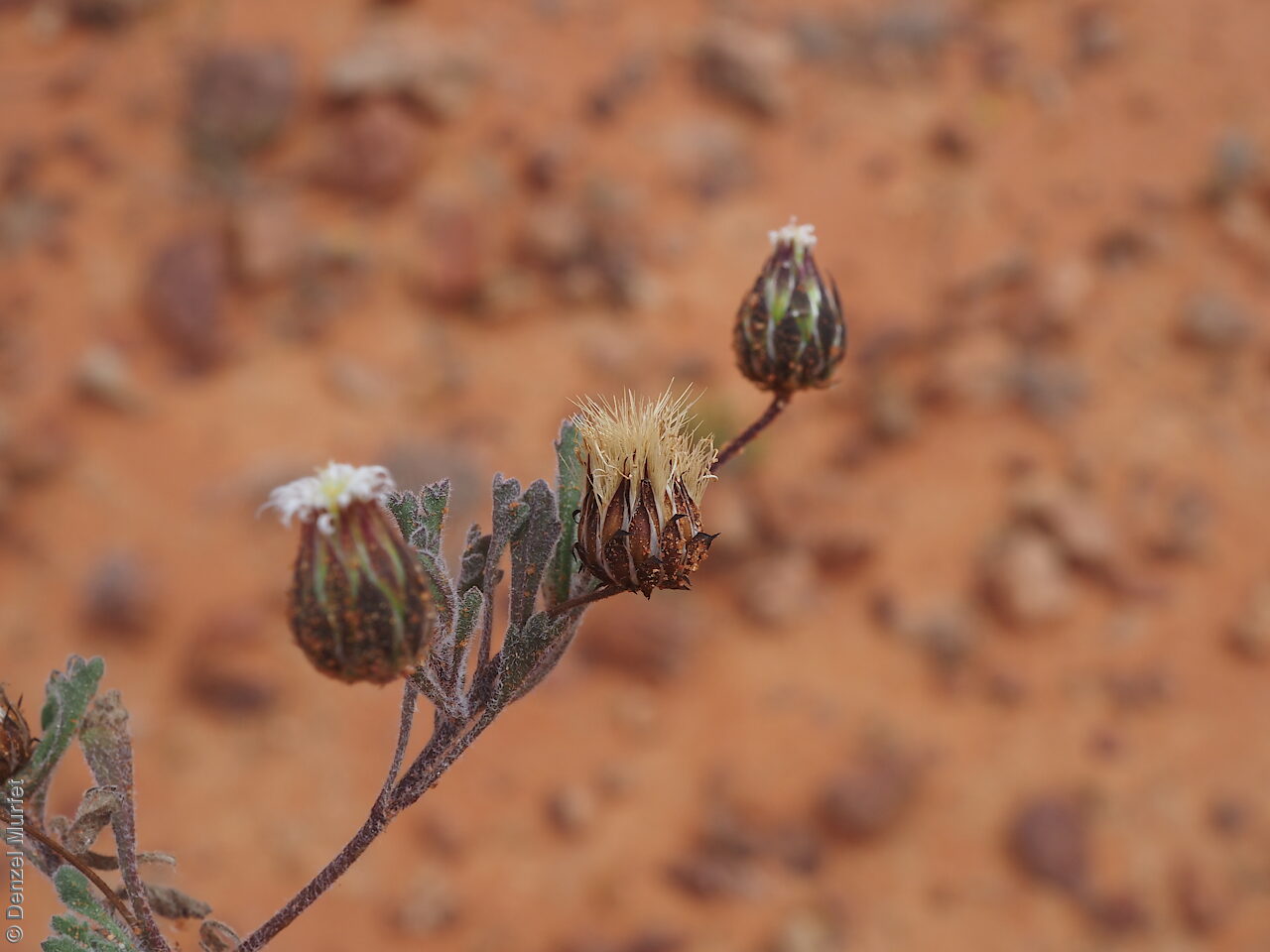
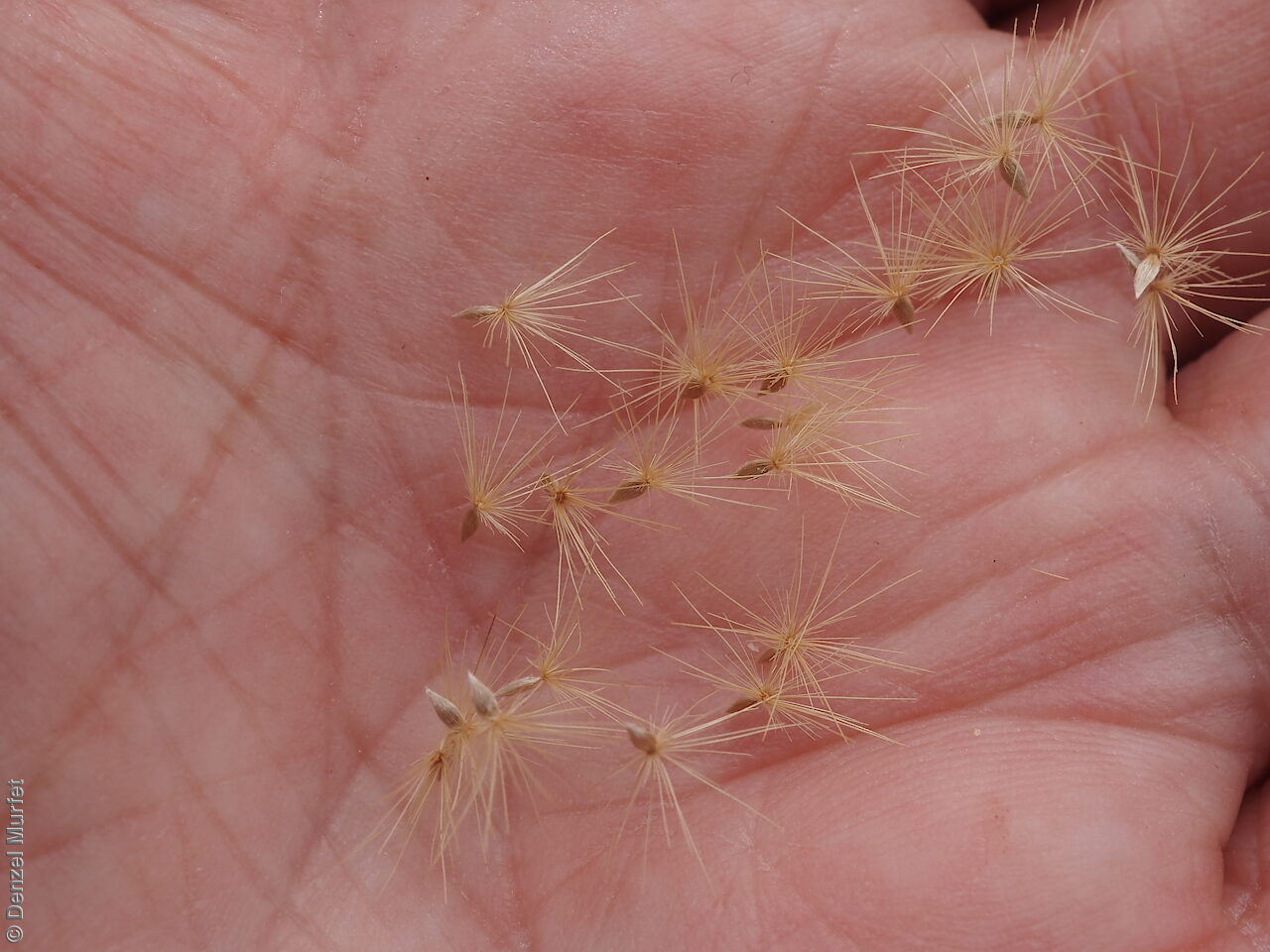
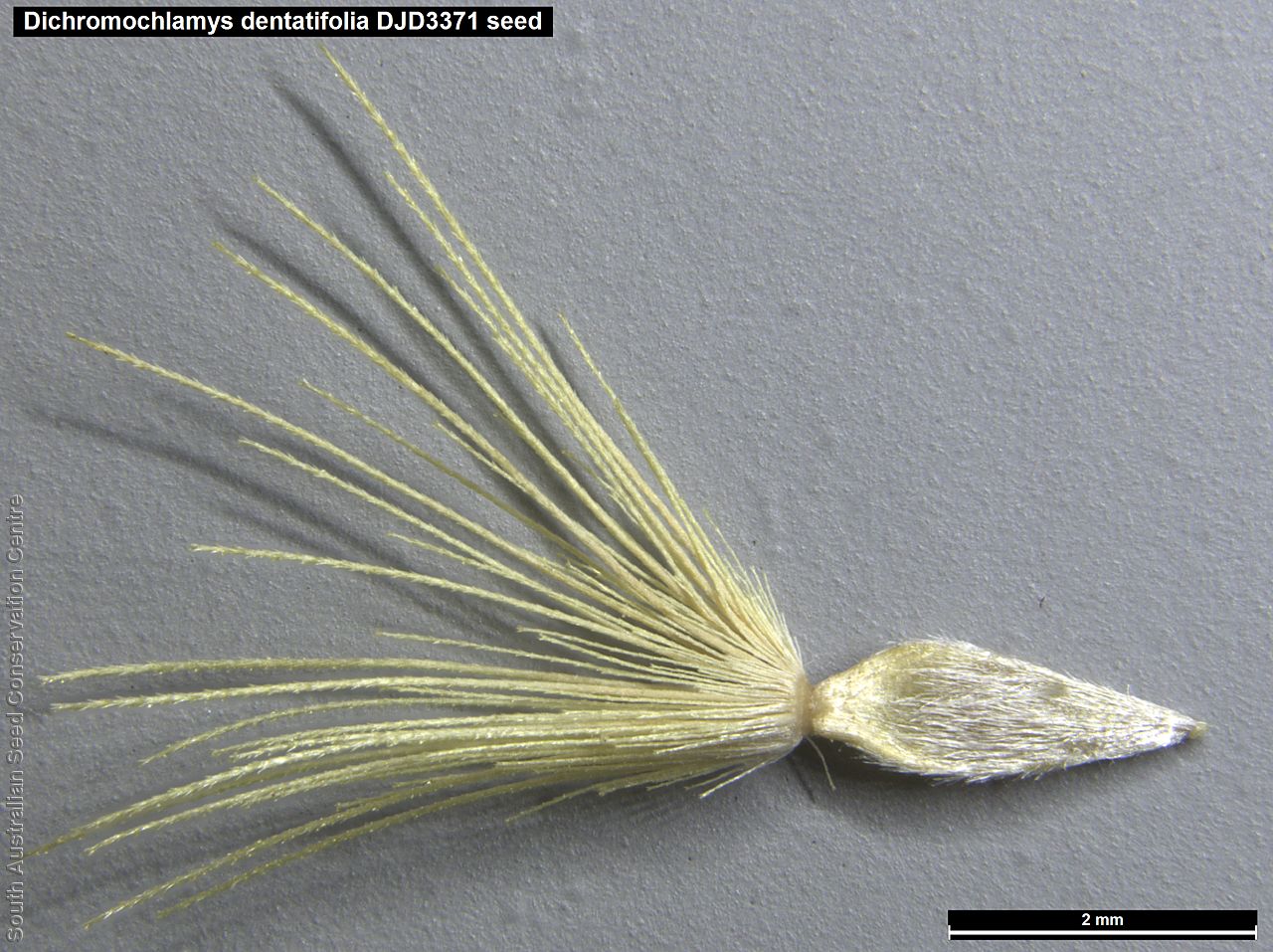
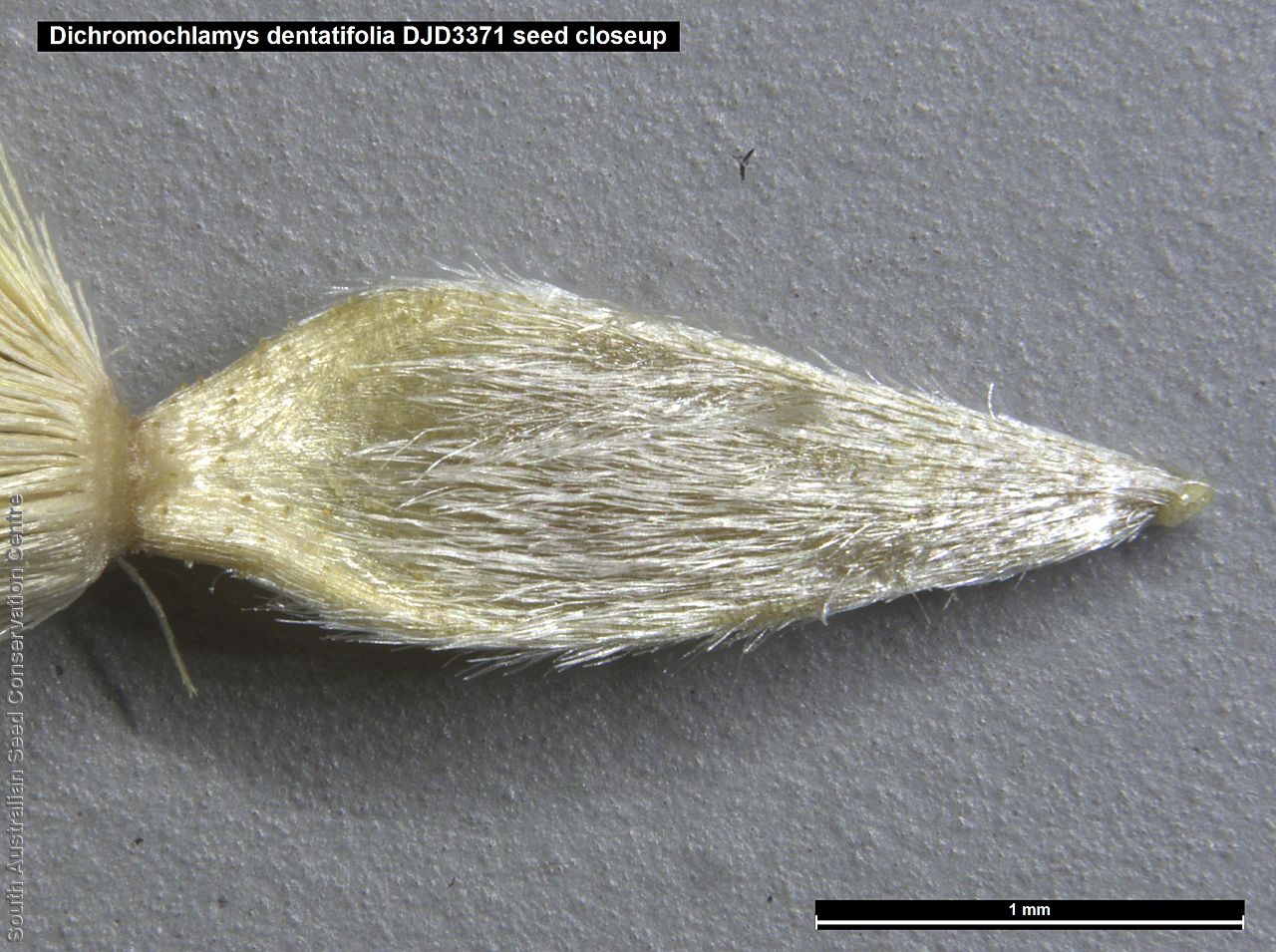
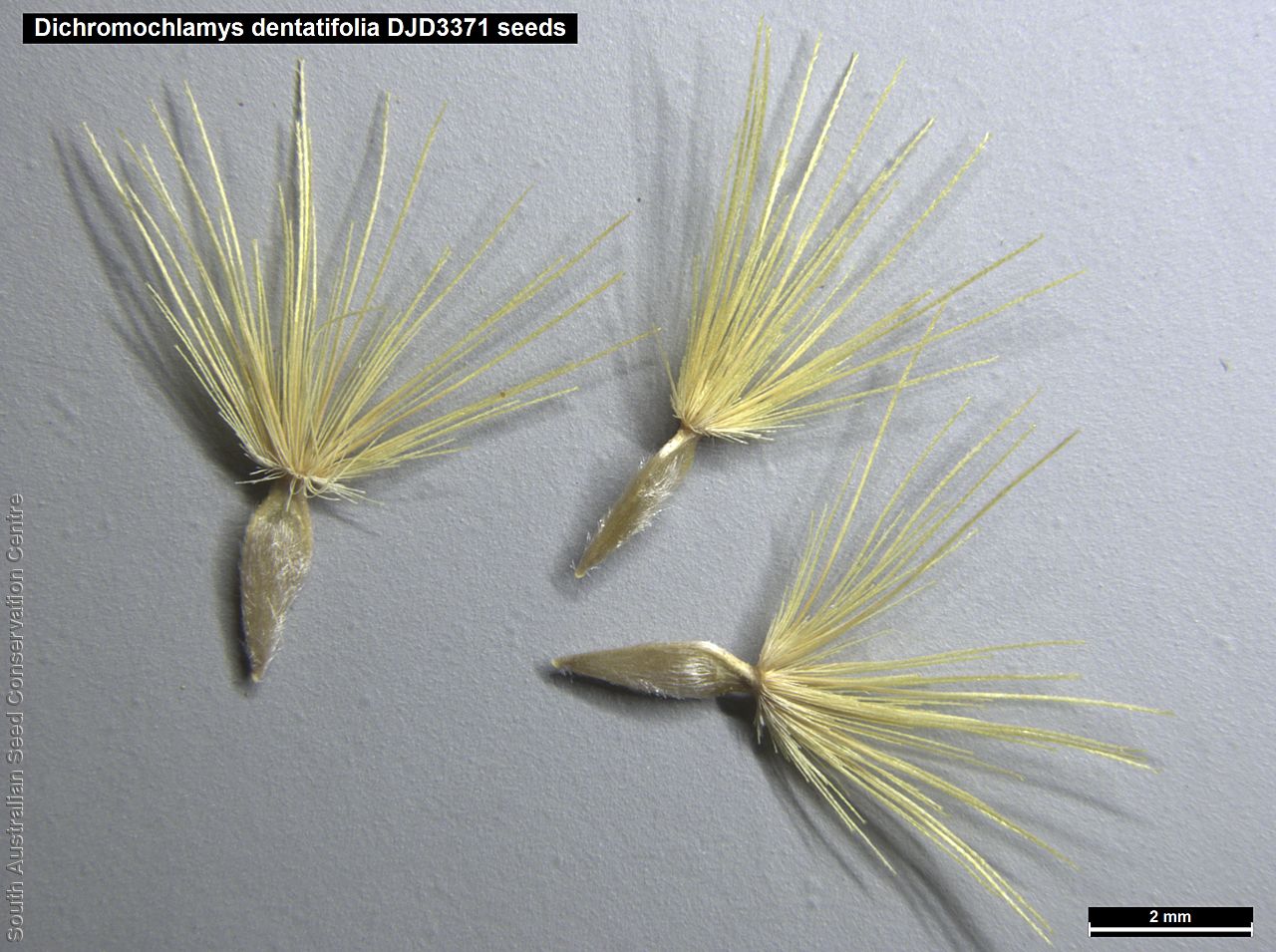
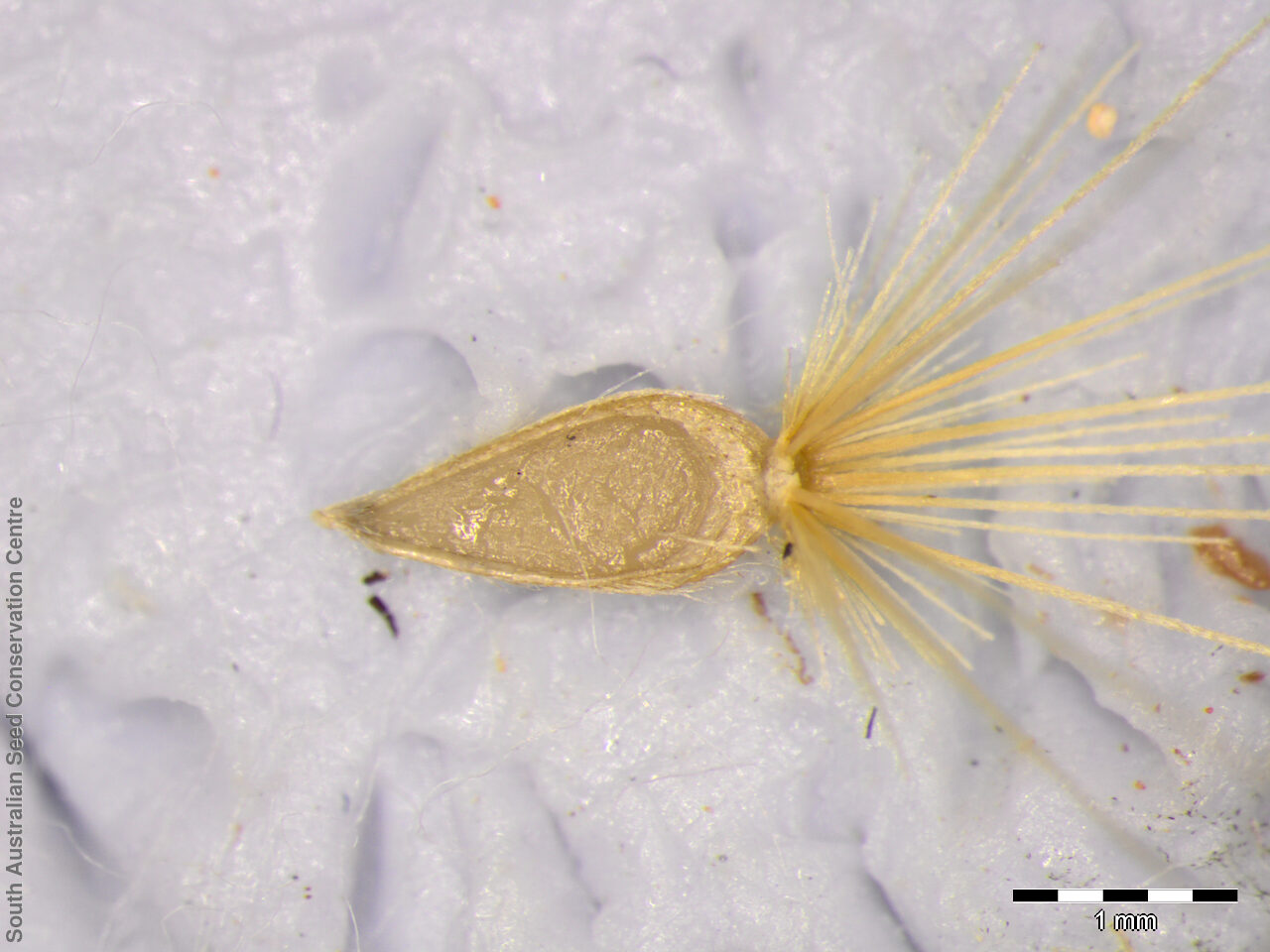
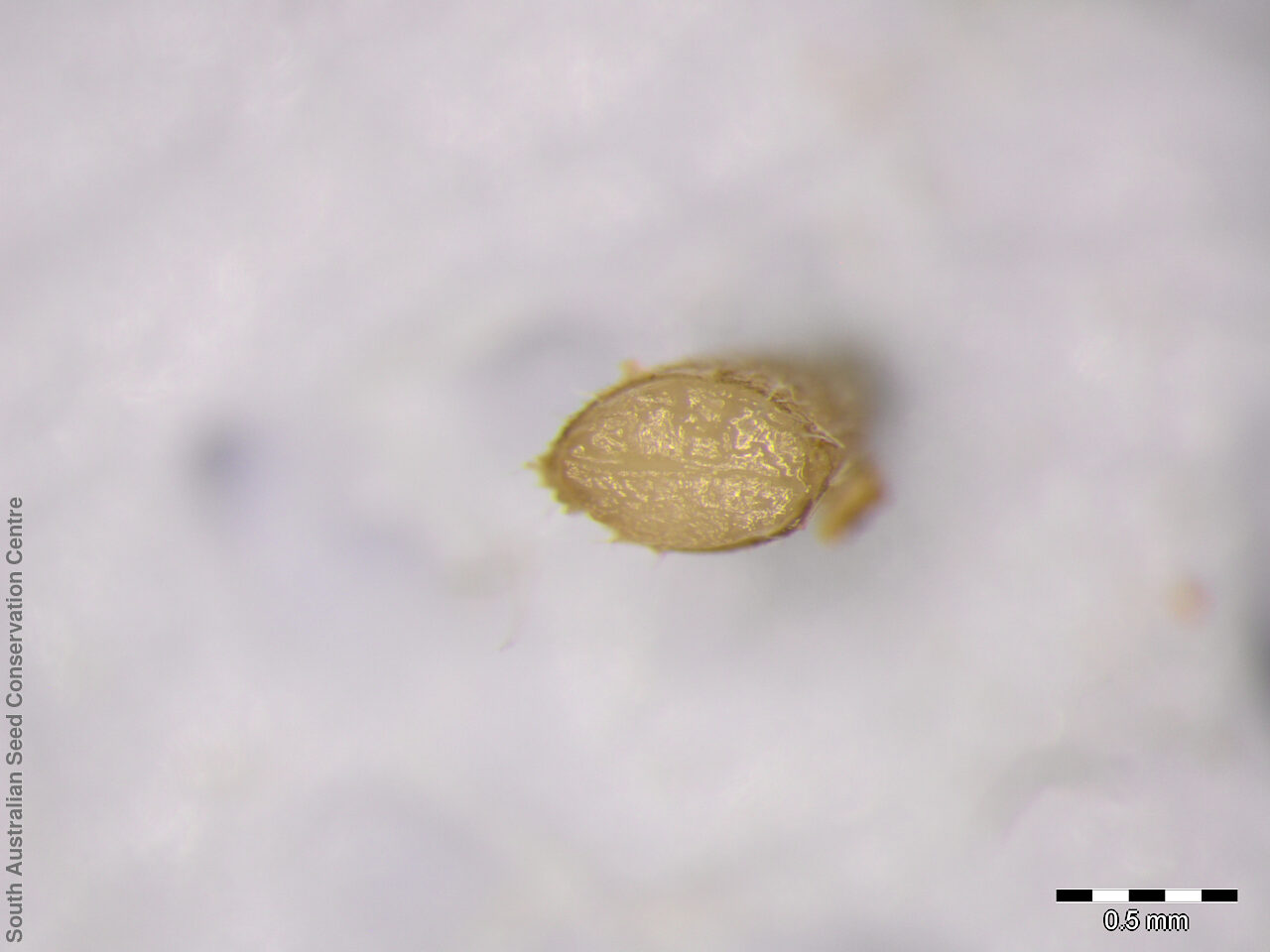

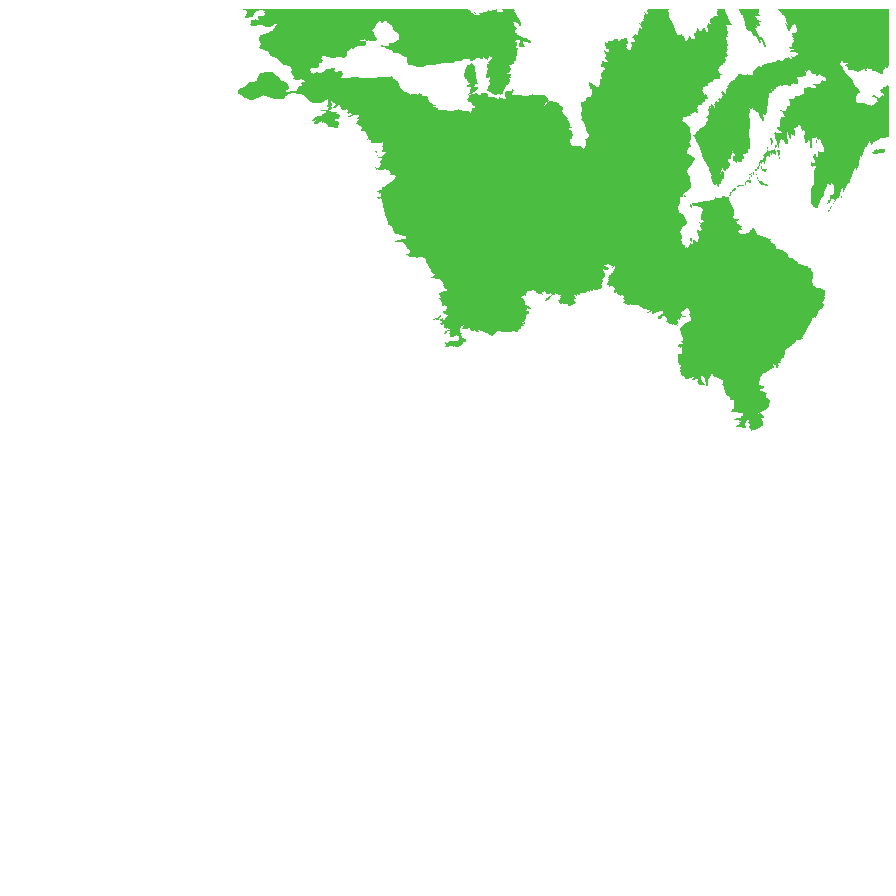
Botanical art
Prior names
Pterigeron dentatifolius
Etymology
Dichromochlamys from the Greek 'dis' meaning double, 'chroma' meaning colour and 'chlamys' meaning cloak; referring to the involucre in which the dark coloured backs of the bracts contrast with the white scarious margins. Dentatifolia from the Latin 'dentata' meaning toothed and 'folium' meaning a leaf, referring to the species' toothed leaves.
Distribution and status
Found in the north and north-east parts of South Australia, growing in grassland and saltbush communities on stony soils. Also found in Western Australia, Northern Territory, Queensland and New South Wales. Native. Common in South Australia. Rare in New South Wales. Uncommon in Western Australia. Common in the other States.
Herbarium regions: North Western, Lake Eyre, Gairdner-Torrens, Flinders Ranges, Eastern
NRM regions: Alinytjara Wilurara, South Australian Arid Lands
AVH map: SA distribution map (external link)
Plant description
Annual herb to 25 cm high; stems decumbent to ascending, villous to woolly, rarely glabrous. Leaves narrow-spathulate to oblong-cuneate, to 3.5 cm long and 10 mm wide with margins toothed apically or rarely entire; surfaces villous to woolly, rarely glabrous glandular; base petiole-like. Flower-heads to 12 mm diameter with small white to pink petals. Flowers in spring. Fruits are round creamy, fluffy daisy-head. Seeds are orange, flat ovoid seed to 2 mm Long and 1 mm wide, covered in creamy hairs and long pappus. Seed embryo type is spatulate fully developed.
Seed collection and propagation
Collect seeds between October and December. Collect heads that are fluffy (seeds still attached). Seeds should come off easily with your fingers. Place the pods in a tray and leave to dry for a week. No further cleaning is required if only seed was collected. Store the seeds with a desiccant such as dried silica beads or dry rice, in an air tight container in a cool and dry place. From one collection, the seed viability was high, at 95%. Seeds are non-dormant; viable seed should germinate readily.
| Location | No. of seeds (weight grams) | Number of plants | Date collected | Collection number Collection location | Date stored | % Viability | Storage temperature |
|---|---|---|---|---|---|---|---|
| BGA | 7,600 (3.02 g) | 10+ | 5-Oct-2010 | DJD1940 Lake Eyre | 1-Jan-2012 | 95% | -18°C |
Number of plants: This is the number of plants from which the seeds were collected.
Collection location: The Herbarium of South Australia's region name.
% Viability: Percentage of filled healthy seeds determined by a cut test or x-ray.